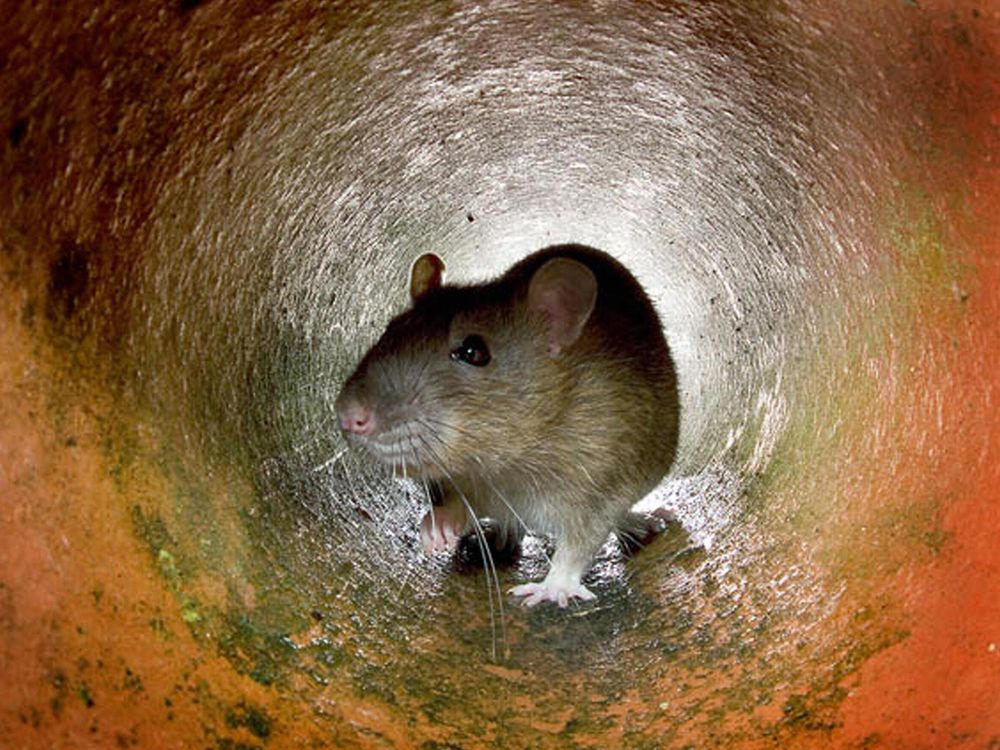Infection
Parasitic, Invasive Worm Found in Rats in Georgia
The life cycle of the parasitic rat lungworm involves rats spreading it to snails and slugs, which pass it back to rats.
AFP via Getty Images
Rats infected with a parasitic worm, which can also cause illness in humans, have been identified in Georgia, according to a study published last week in the journal Emerging Infectious Diseases.
While the parasite, called rat lungworm (or Angiostrongylus cantonensis), has shown up in southern states such as Texas, Tennessee, Louisiana, Alabama and Florida, this marks the first time it has been recorded in Georgia.
Rat lungworm only infects humans in “unusual circumstances,” per the Centers for Disease Control (CDC). The agency identified just 12 cases of human infection in the continental United States between January 2011 and January 2017. Most infected people recover fully without treatment, and some patients have either no symptoms or only mild symptoms that last for a short time.
In certain cases, though, the worm can cause a rare condition called eosinophilic meningitis that can lead to death, according to a 2021 study in the journal Research in Veterinary Science.
“When the infective stage of the worm is accidentally ingested by a human, it can go to the brain or spinal cord and cause tremendous inflammation, leading to symptoms like nausea, vomiting, neck stiffness, headaches, sometimes arm and leg tingling,” Nicole Gottdenker, first author of the new study and an infectious disease pathologist at the University of Georgia, tells Newsweek’s Pandora Dewan.
In general, however, the parasitic worm lives in the lungs of rats. The sickened rats cough up the larvae and swallow them into their digestive systems. Slugs and snails can become infected by consuming or coming into contact with rat poop that contains parasite larvae.
Then, the larvae develop in the slugs and snails, and when rats eat the infected gastropods, they become hosts of the lungworm again, continuing the cycle. Frogs, freshwater shrimp and crabs can also carry the parasite and pass it along to rats and other hosts.
As a result, to avoid getting infected, the CDC recommends not eating raw or undercooked snails, slugs, frogs or shrimp. Thoroughly washing produce can help prevent accidental consumption of snails or slugs that might be on the food. In areas where the parasite is prevalent, people should avoid uncooked vegetables, per the agency. The lungworm cannot pass from person to person, and fish do not spread it.
To get an idea of the parasite’s whereabouts, scientists studied 33 wild brown rats found dead in an Atlanta zoo between 2019 and 2022. Seven of the rats had worms in their hearts, pulmonary arteries and brain tissues. The team conducted genetic analysis to determine that four of the seven rats had A. cantonensis worms. While the other three appeared to have rat lungworms as well, the sample quality was either too low or the DNA too degraded for the researchers to be sure.
The parasites were genetically identical to worms previously found in Louisiana. Since rat lungworm had been detected in neighboring states, the parasite likely first appeared in Georgia before 2019, the study authors write.
Rat lungworm was first identified in Asia and is prevalent in Southeast Asia and tropical Pacific islands, per the CDC. Most known cases of human infection have been in parts of Asia and the Pacific, though the parasite has also been found in Australia, some parts of Africa, the Caribbean and Hawaii. In total, more than 2,800 cases spanning 30 countries have been documented in published research, per the CDC.
Scientists suspect the worm has expanded across the globe via infected rats on ships and the spread of introduced snails and slugs, such as the giant African land snail.
Human disturbances and climate-induced disruptions to food webs in the southern U.S. could be contributing to an increase in rat lungworm transmission, the authors write.
Recommended Videos

